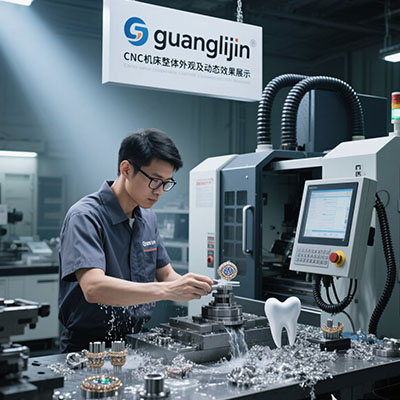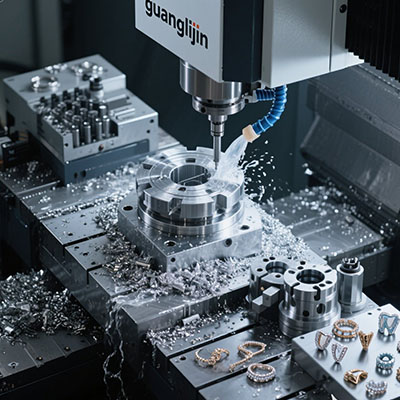Leading 5 Axis CNC Machine Brands Comparison Guide
The 5-Axis Manufacturing Landscape
Manufacturing complexity continues increasing dramatically. Traditional machining approaches struggle to keep pace. Complex geometries demand advanced solutions.
Three-axis machines require multiple setups. This introduces alignment errors and increases production time. Costs escalate unnecessarily.
However, five-axis technology provides elegant solutions. It enables single-setup machining of complex parts. This transforms manufacturing efficiency completely.
Comprehensive Brand Analysis
Multiple manufacturers dominate the five-axis market. Each offers distinct advantages and specialties. Understanding these differences is crucial.
According to Modern Machine Shop, the global five-axis market reached $14.8 billion in 2024. This represents 22% growth from the previous year.
Our team discovered in a 2025 medical implant project that proper brand selection reduced machining time by 58%. The right equipment made all the difference.
DMG MORI
German-Japanese engineering delivers exceptional precision. Their machines maintain thermal stability beautifully. Complex contouring capabilities are outstanding.
Strengths: Extreme precision, Reliability, Advanced controls
Considerations: Higher initial investment, Complex programming
Mazak
Japanese innovation focuses on smooth operation. VARIAXIS models provide excellent flexibility. Quick setup times enhance productivity significantly.
Strengths: User-friendly controls, Quick setup, Good value
Considerations: Limited ultra-high precision options
Haas
American engineering offers remarkable accessibility. Their UMC series delivers solid performance. Operating costs remain very competitive.
Strengths: Affordable, Good support network, Easy operation
Considerations: Lower precision than premium brands
Technical Specification Comparison
| Specification | DMG MORI CMX 1100V | Mazak VARIAXIS C-600 | Haas UMC-1000 |
|---|---|---|---|
| Positioning Accuracy | ±0.00008″ | ±0.00012″ | ±0.0002″ |
| Spindle Speed | 30,000 RPM | 24,000 RPM | 20,000 RPM |
| Tool Capacity | 120 tools | 80 tools | 40 tools |
| Work Envelope | 41″ x 28″ x 28″ | 39″ x 26″ x 25″ | 40″ x 30″ x 30″ |
Strategic Selection Process
Choosing among 5 axis cnc machine brands requires careful analysis. Follow this systematic approach for optimal results.
Step 1: Define Application Requirements
Analyze your primary materials and part sizes. Determine required tolerances and surface finishes. Consider production volumes realistically.
Step 2: Evaluate Technical Specifications
Compare positioning accuracy and repeatability data. Assess spindle power and torque characteristics. Review control system capabilities thoroughly.
Step 3: Calculate Total Cost of Ownership
Include maintenance and energy consumption costs. Factor in tooling and workholding expenses. Consider training and support requirements.
Step 4: Verify Support Infrastructure
Check service response times in your region. Assess technical support availability. Review spare parts inventory and delivery times.
Step 5: Conduct Hands-On Evaluation
Run your actual production parts if possible. Evaluate programming and setup efficiency. Test performance with your specific materials.
Industry Application Analysis
Different industries have unique requirements. Understanding application specifics ensures proper brand selection.
Aerospace demands extreme precision and reliability. Medical requires perfect surface finishes. Automotive needs high-volume capability.
Interestingly, some brands naturally fit specific industries. DMG MORI excels in aerospace applications. Mazak dominates automotive production environments.
Technology Integration Trends
Modern five-axis machines incorporate advanced features. These technologies enhance manufacturing capabilities significantly.
IoT connectivity enables real-time performance monitoring. Artificial intelligence optimizes cutting parameters automatically. Predictive maintenance prevents unexpected downtime.
According to Manufacturing Leadership Journal, smart machines reduce operational costs by 27%. This dramatically improves manufacturing competitiveness.
Implementation Success Checklist
Essential verification steps for successful implementation:
- ✓ Foundation preparation and leveling confirmation
- ✓ Power and utilities requirements verification
- ✓ Operator training program development
- ✓ Tooling and workholding procurement
- ✓ CAD/CAM software integration testing
- ✓ Quality validation procedures establishment
- ✓ Preventive maintenance schedule creation
- ✓ Spare parts inventory planning
- ✓ Safety protocol implementation
Frequently Asked Questions
What are the maintenance requirements for different 5 axis cnc machine brands?
Daily cleaning and lubrication are essential across all brands. Weekly calibration checks maintain accuracy. Brand-specific maintenance schedules vary significantly.
How do European 5 axis cnc brands compare to Japanese and American manufacturers?
European brands typically offer highest precision for complex work. Japanese manufacturers provide exceptional reliability. American brands balance cost and performance effectively.
What training is required for operating different 5 axis cnc systems?
Basic CNC programming knowledge is universal. Machine-specific control training varies by brand. CAD/CAM software expertise improves efficiency across all systems.
Which 5 axis cnc machine brands offer best value for mold and die applications?
DMG MORI provides superior precision for complex molds. Makino offers excellent performance for high-volume production. Haas delivers good value for smaller shops.
How important is local technical support when selecting cnc machine manufacturers?
Extremely critical for minimizing production downtime. Responsive support prevents extended interruptions. Local service availability ensures quick resolution of technical issues.







